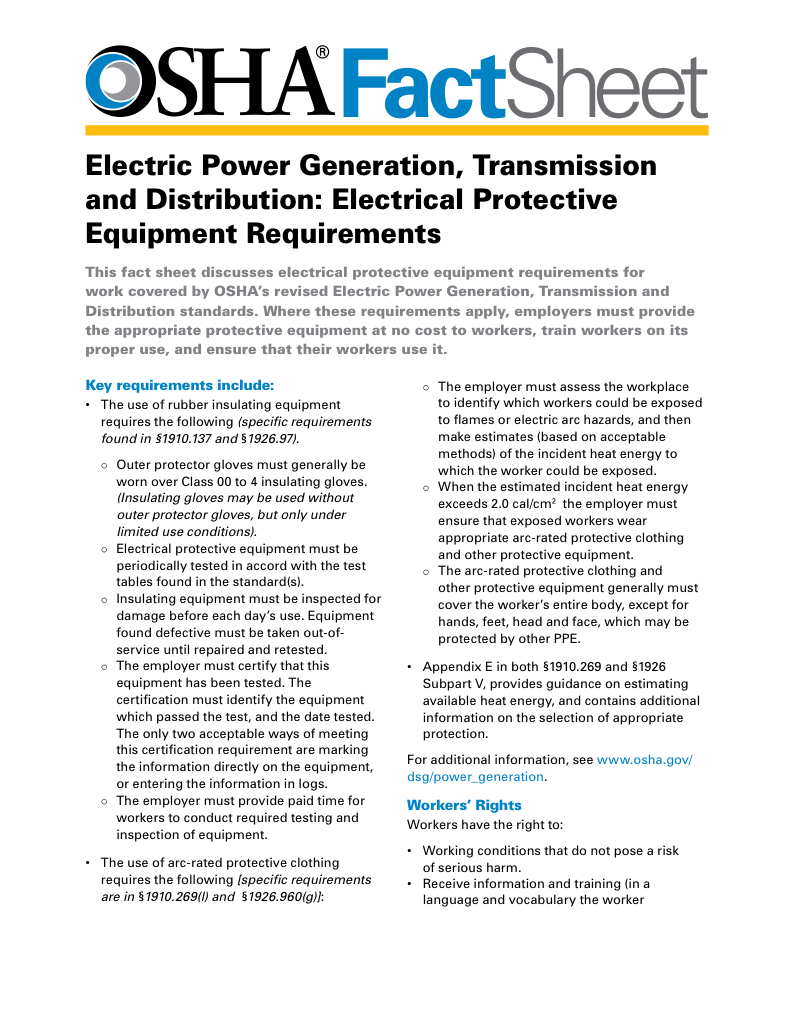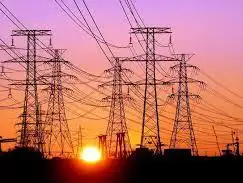Electrical Safety Regulations Examined

CSA Z462 Arc Flash Training - Electrical Safety Essentials
Our customized live online or in‑person group training can be delivered to your staff at your location.

- Live Online
- 6 hours Instructor-led
- Group Training Available
Download Our OSHA 3875 Fact Sheet – Electrical PPE for Power Industry Workers

- Follow rules for rubber gloves, arc-rated PPE, and inspection procedures
- Learn employer obligations for testing, certification, and training
- Protect workers from arc flash and electrical shock injuries
Electrical safety regulation sets standards and codes for compliance, risk assessment, grounding, arc-flash protection, PPE, lockout-tagout, and inspection, ensuring safe design, installation, operation, and maintenance in electrical engineering through hazard analysis and periodic testing.
What Is Electrical Safety Regulation?
A framework of standards, codes, and practices reducing hazards for safe design and operation.
✅ Defines compliance with NEC, IEC, OSHA, and local electrical codes.
✅ Mandates risk assessment, arc-flash labeling, and PPE selection.
✅ Requires grounding, bonding, protective devices, and lockout-tagout.
Electrical safety regulations are governed by all three levels of government—federal, state/provincial and municipal governments. They set regulations, laws and acts that relate to electrical health and safety and other work-related practices. These electrical safety regulations are founded using the U.S. National Electrical Code and the Canadian Standard Association's Canadian Electrical Code Part 1 (CEC) as a model for regulation. (There are Ontario amendments). In Ontario, compliance guidance is further detailed in the Ontario Electrical Safety Code for jurisdiction-specific practices and inspections.
The National Electrical Code (NEC) is a standard that has been developed by the National Fire Protection Association (NFPA)'s Committee on the National Electrical Code. This committee is comprised of 19 code-making panels, as well as a national ttechnical correlating committee to coordinate between the panels. The NEC is approved as an American national standard by the American National Standards Institute (ANSI). It is formally identified as ANSI/NFPA 70. In federal contexts, OSHA interpretations clarify that OSHA’s electrical standards are based on NFPA 70 and related consensus codes when assessing employer programs and abatement methods.
The Canadian Electrical Code serves as the basis for wiring regulations across Canada. Generally, provincial legislation adopts the CEC by reference, sometimes with provincial changes or amendments that tailor the CEC for local conditions. These amendments may be administrative in nature or may consist of technical content particular to the region. Since the Code is a copyrighted document produced by a private body, it may not be distributed without copyright permission from the CSA group. To support compliant implementation, many organizations distill code obligations into electrical safety manuals that inform training, procedures, and documentation.
Sign Up for Electricity Forum’s Arc Flash Newsletter
Stay informed with our FREE Arc Flash Newsletter — get the latest news, breakthrough technologies, and expert insights, delivered straight to your inbox.
Technical requirements of the Canadian Electrical Code are very similar to those of the US National Electrical Code. Specific differences, however, persist and many installations acceptable under one Code may not comply with the other Code. Harmonization of technical requirements between the two Codes is ongoing. For designers and owners, verifying applicable electrical safety requirements early in the project lifecycle helps avoid rework and inspection delays.
Several CEC Part II electrical equipment standards have been harmonized with standards in the USA and Mexico through CANENA, The Council for the Harmonization of Electromechanical Standards of the Nations of the Americas (CANENA) is working to harmonize electrical codes in the western hemisphere.
The technical detail inside the Canadian Electrical Code contains similarities to the National Electrical Code, the electrical safety regulation model used in the United States. The two codes clash on certain technical requirements and installations, however, the correlation of the two codes on meeting a universal set of electrical safety standards is ongoing.
The CEC is divided into four parts. Part I gives electrical safety regulation on electrical maintenance and installation. Part II gives design and construction specifications for electrical equipment. Part III is the electrical safety regulation for transmission and distribution systems. Part IV sets standards for certain institutional and industrial installations, which is not covered in this article. For specialized occupancies, guidance on patient-care spaces is complemented by resources on hospital electrical safety to address risk controls and maintenance practices.
NFPA70e
NFPA 70e establishes the best arc flash practice standards on how to protect electrical workers from arc flash exposure and resulting potential injury and possible death. OSHA has referenced NFPA 70e in a number of cases. Many organizations have now designed an NFPA 70E safety program to help protect their electrical personnel . The 2021 edition is summarized in this overview of NFPA 70E 2021 updates that affect arc-flash risk assessment, PPE, and procedures.
CSA Z462
CSA Z462 is on of the Canadian electrical safety regulations from the Canadian Standards Association that govern workplace electrical safety. CSA Z462 is a "Canadianized" version of the U.S. National Fire Protection Association (NFPA) standard NFPA 70E, Standard for Electrical Safety in the workplace. CSA Z462 was initially developed in conjuntion with the NFPA 70e edition. Attempts have been made to harmonize CSA Z462 with NFPA 70e wherever practical, specifically for Canadian workplaces. CSA Z462 is the worplace electrical standard that deals with strictly electrical safety requirements for employees who perform electrical work such as electrical installation. For Canadian workplaces, a practical synopsis of CSA Z462 requirements can help align hazard assessments, labeling, and energized work permits.








